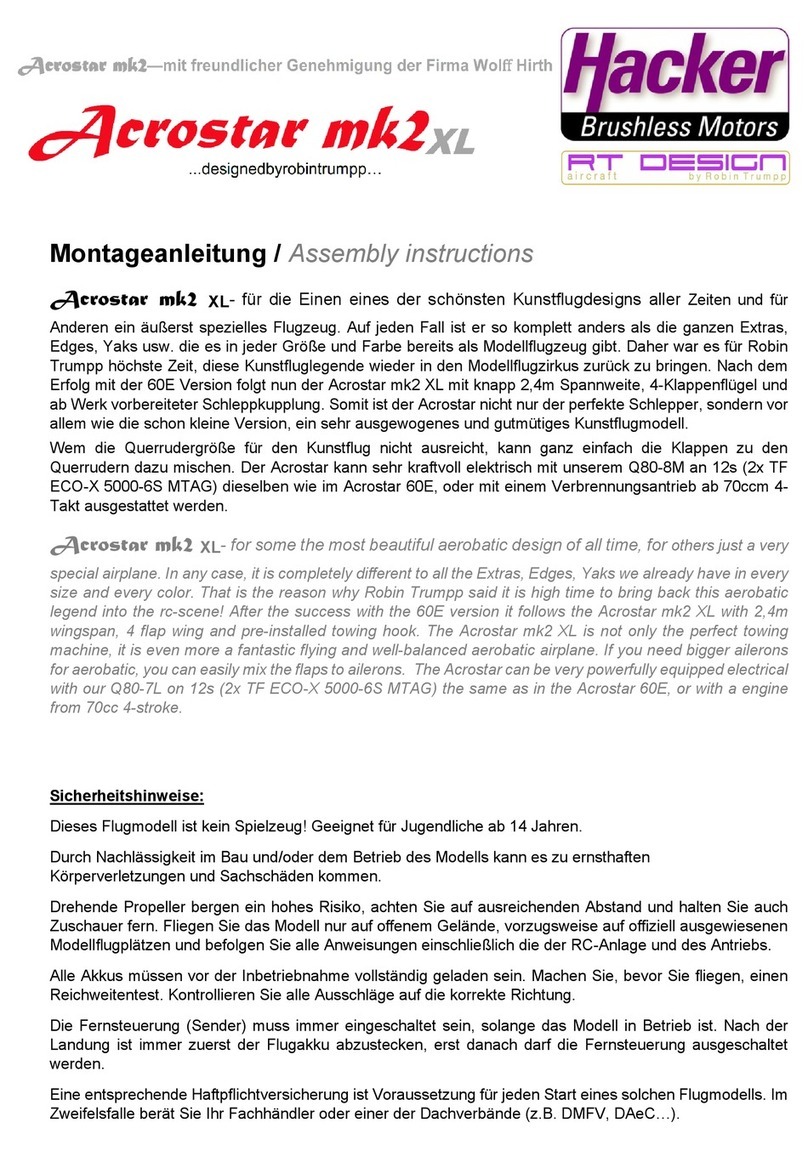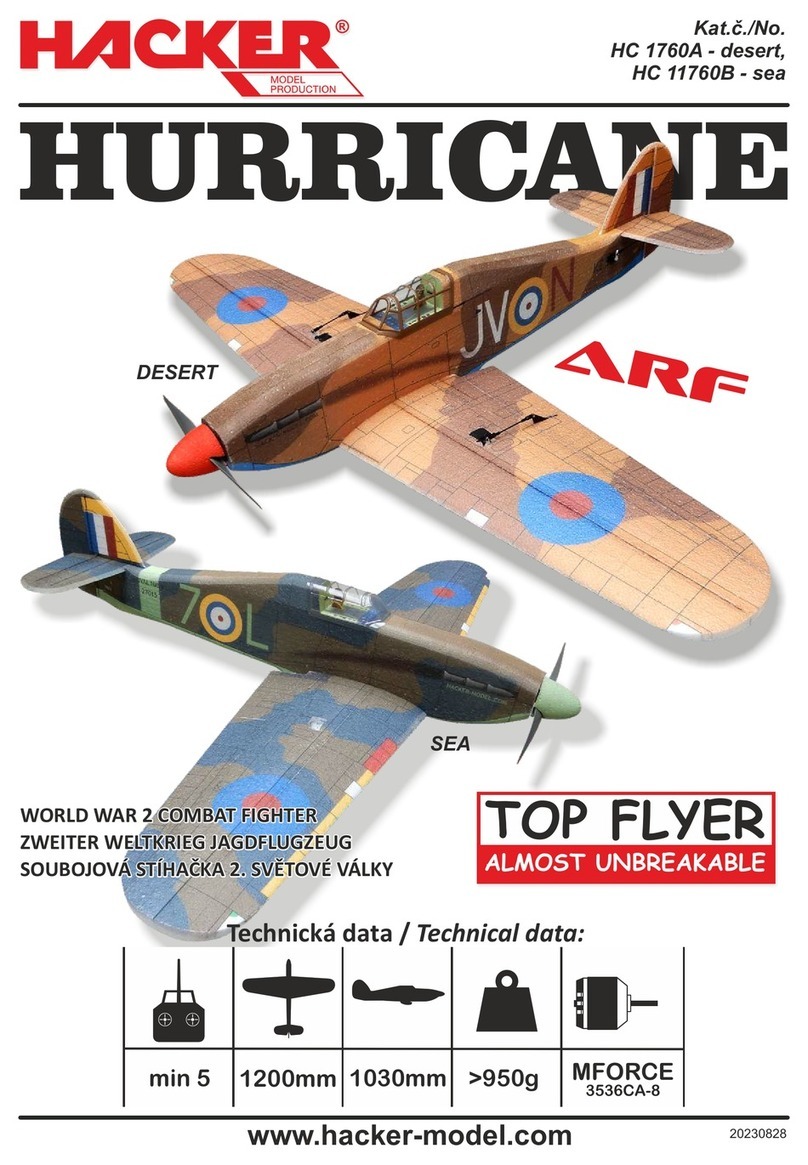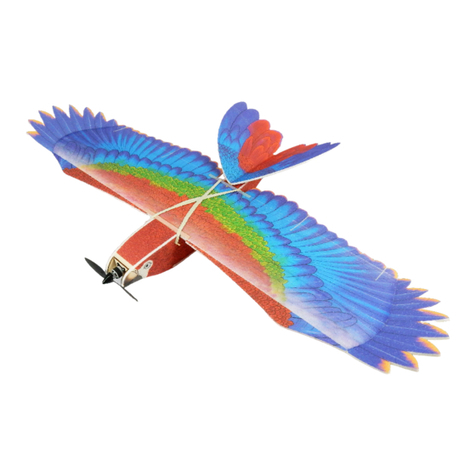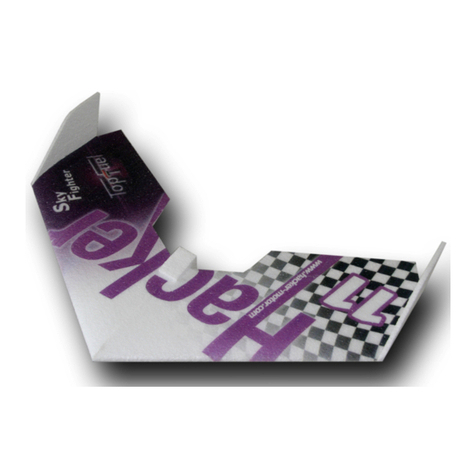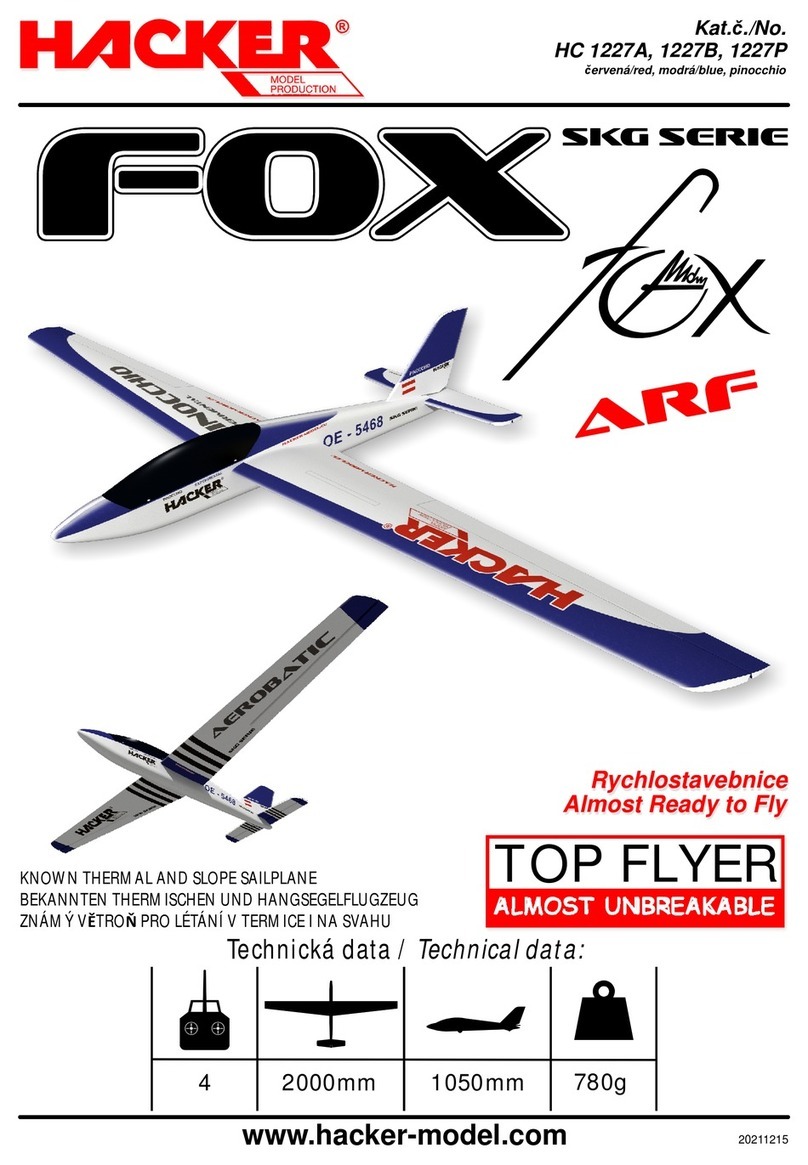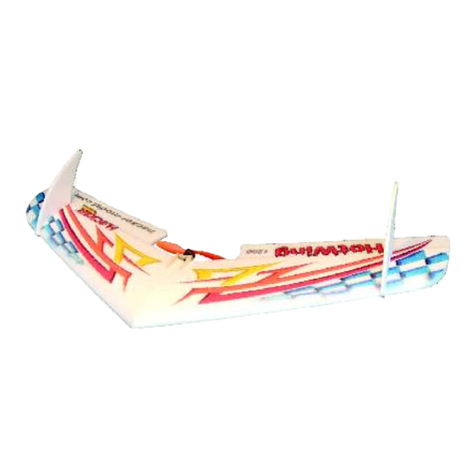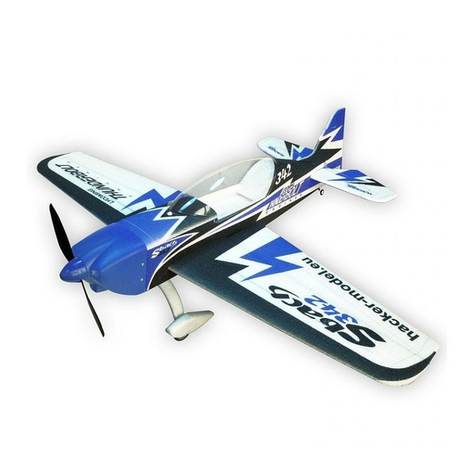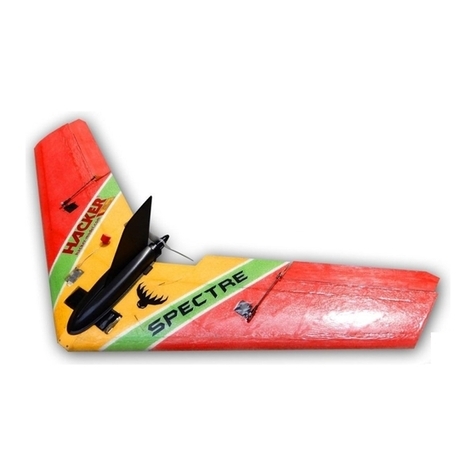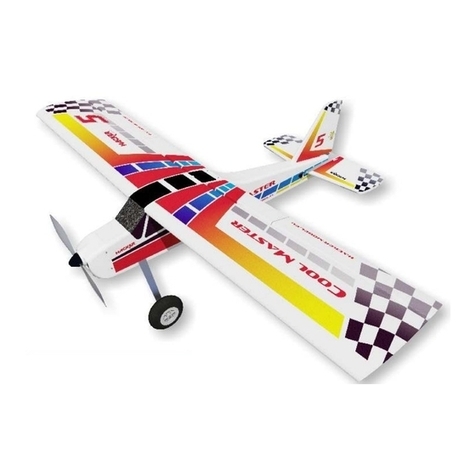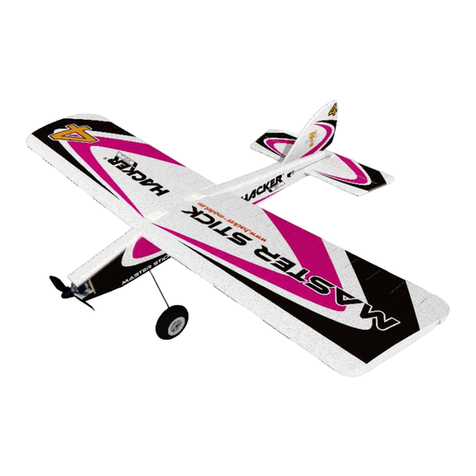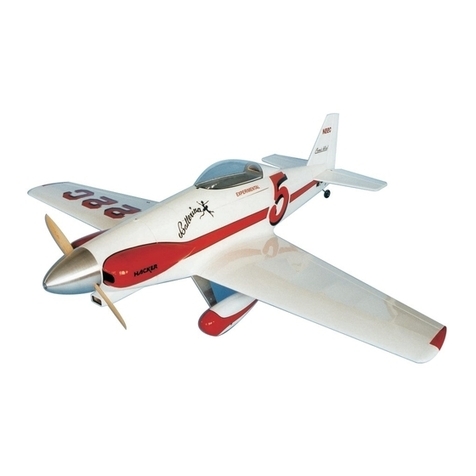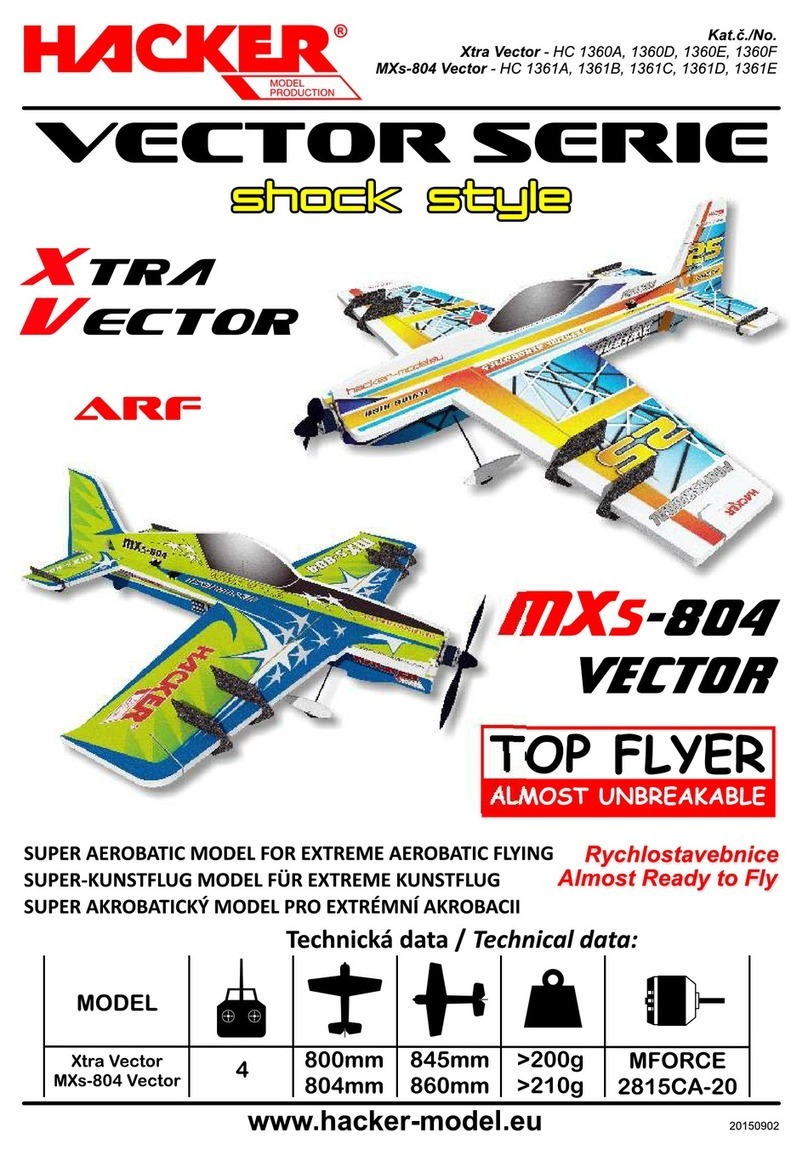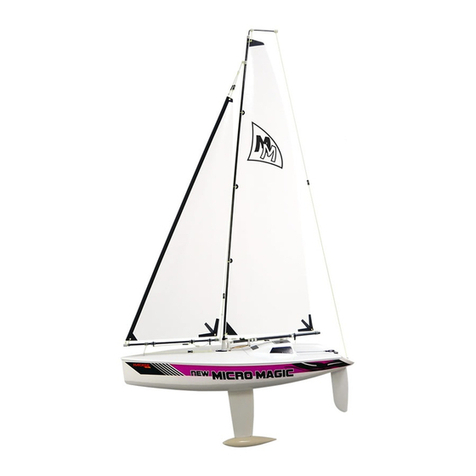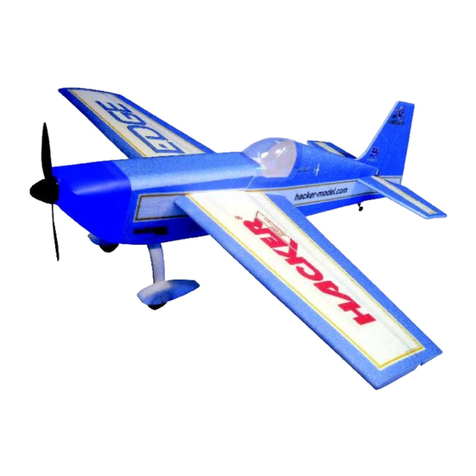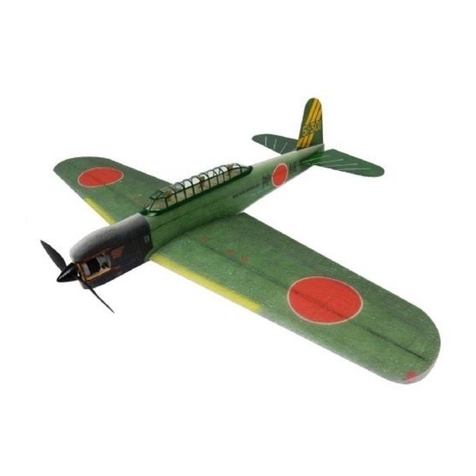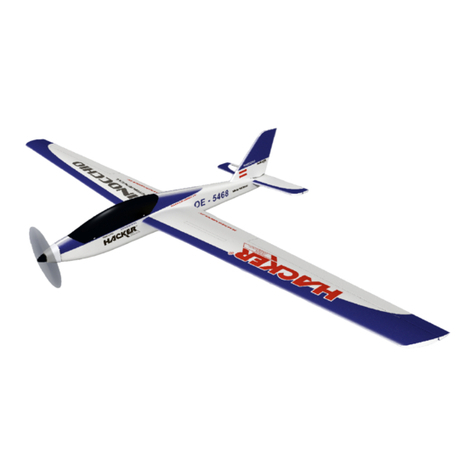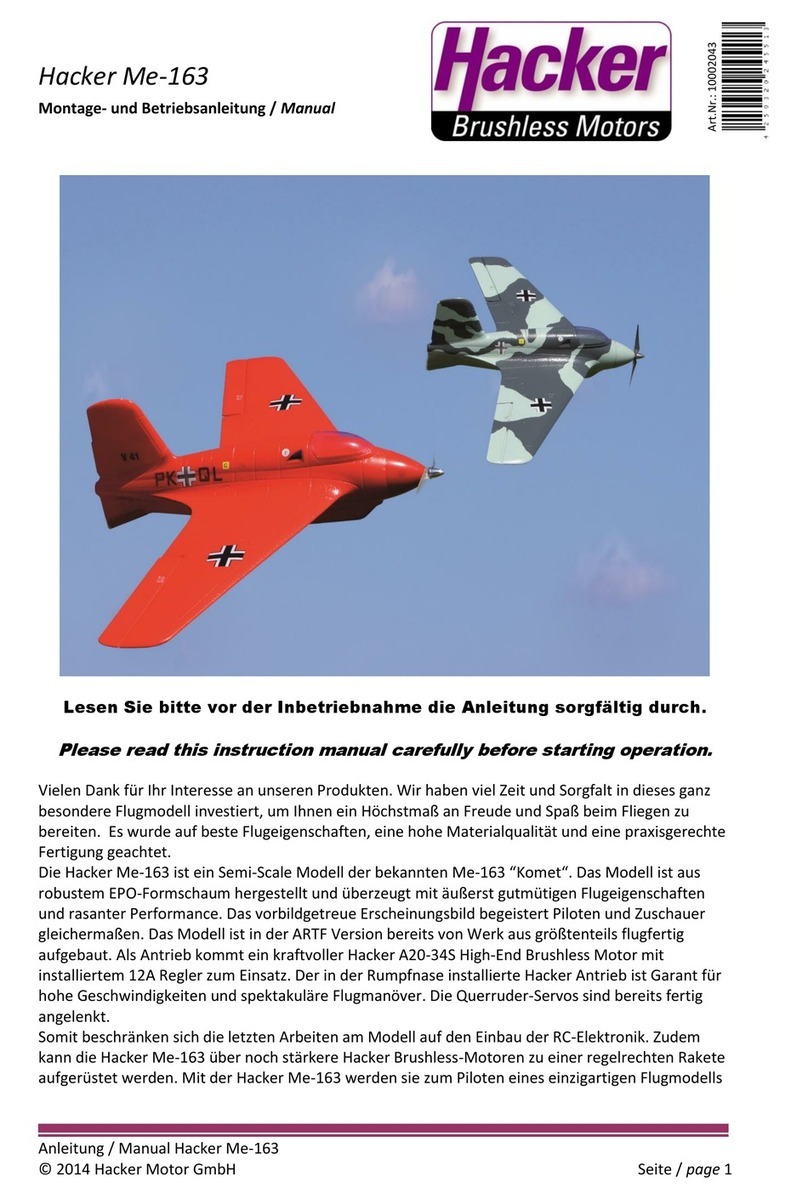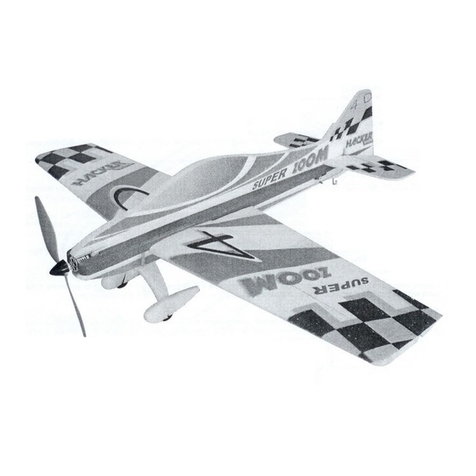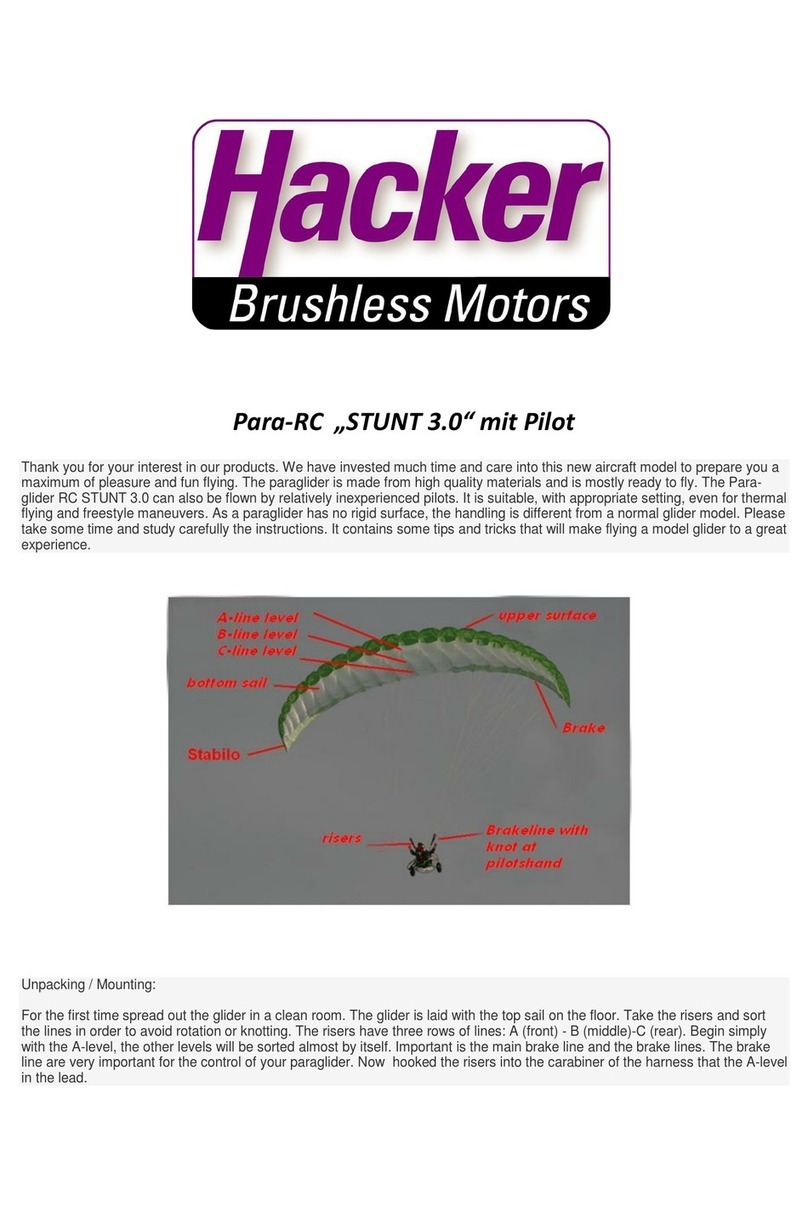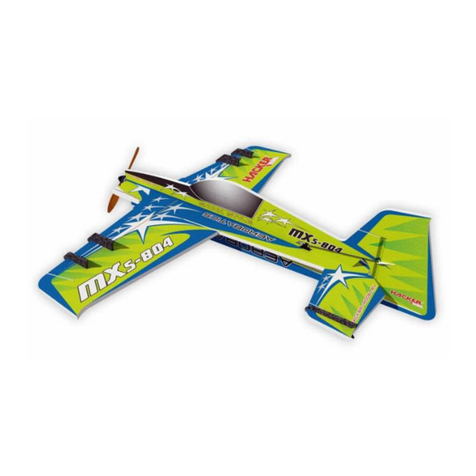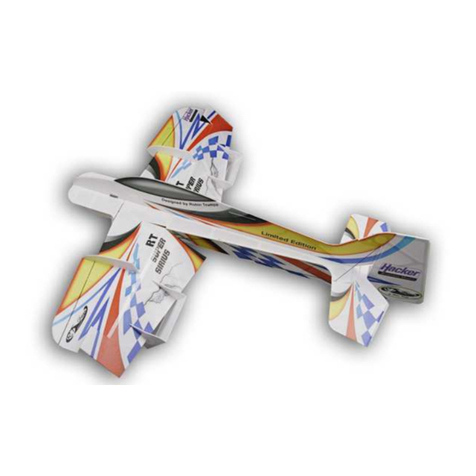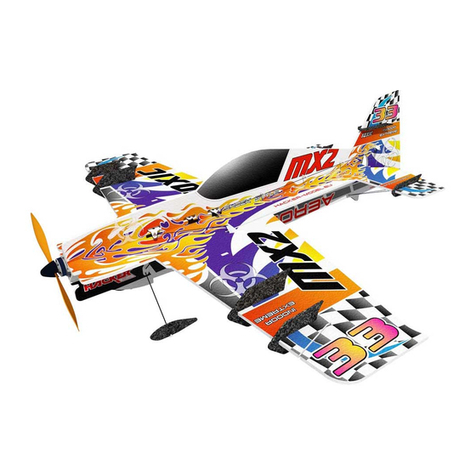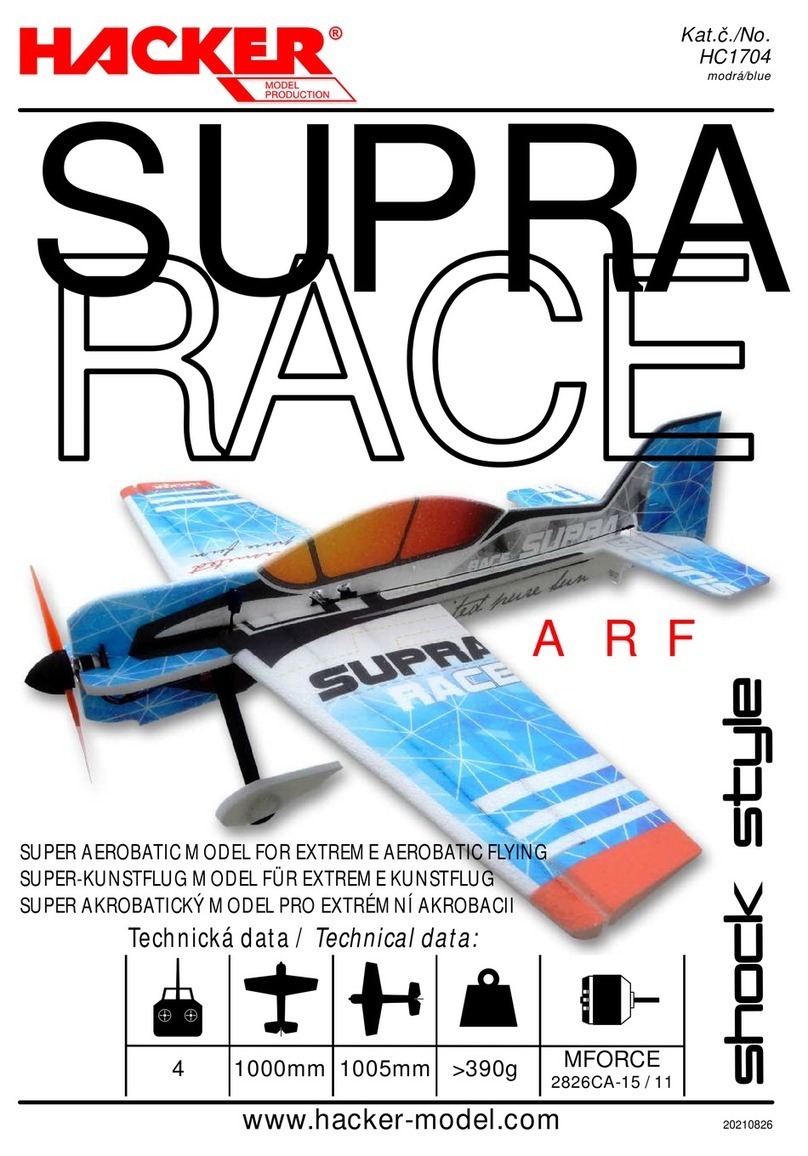8. Selecl a strip of performed trailing edge 36 and cut the notches for the ribs. Do the same way the notches into the trailing edge 49.
9. On the building plan covered with polyethylene foil assemble the middle part of the wing. Put under spruce 16, 18 and front part of
trailing edge pieces of balsa as shown on the drawing and pin to the plan. Glue all ribs 20,21,22 and 23 in position on spar and trailing
end notches. Glue and pin into place leading edge 34 and ledges 16 and 18 into notches of the ribs. After dry ta ke aut the part of wing
from the board. The wing tips glue the same way. The ribs 23 are glued in the place of break in the middle and on the wing tips with
obliqueness. The slant 7 grades Vou will assure by using former 61 which Vou are able to make according drawing from part of plywood
ar hard paper.
10. After cut off the overhanged ledges, leading and trailing edges, sand the wing tips as shown. Glue the rib 5 to the wing and drill the
holes for the tubes 39 and 40. The wires 41 and 42 put through the holes in head. Put tubes 39 and 40 on them and put the both part of
wings on the tubes 39 and 40 and check their position, angle must be same on the both sides. Glue on the several points the tubes in
the right position with CA glue to the ribs and spruces of the wing. Than glue the former 43 between the ribs and spruces of the wing.
Fill in the space between the former 43 and gloves of the wires 39 carefully with epoxy. The short tubes 40 glue with epoxy to spruce
18. Glue balsa 1,5 mm 37 between ribs 20 as shown. The space between the spruces 16 fill in and glue with spruces 44 made from
balsa 2 mm.
11. In the ribs 23 make the holes for dihedral brace 32. Check the fit of dihedral brace into each wing half. It should slide smoothly in
until the center is reached. Test assemble the wing to assure that the fit of the brace allows the wing root edges to meet perfectiy.
Leading edges and trailing edges should meet exactly. Use sandpaper to eliminate any binding ar to correct alignmenl. Smear slow
setting (30 minute) epoxy on half of dihedral brace and slide it into one half. Coat the wing center faces with a very thin layer of epoxy
and coat the other half of the wing brace. Slide the wing halves together until they meet and fit. Se sure that the dihedral brace stays
centered. When dry sand the whole wing including the wing tips to shape as shown.
12. Glue the horizontal stabilizer by the same way like wing. When dry sand the horizontal stabilizer to shape as shown. Orill the slant
hole of 2 mm for pin 51 in the middle rib 47 as shown. The pin glue with CA glue after covering and painting the horizontal stabilizer.
13. Sand smooth the entire struclure to eliminate all rough edges and bumps. The laminates tail surrounds will need carrying with a
knife to bring them down to the correct profile. The trailing edges should be sanded down to a near point and the leading edges
rounded (similar to the wing section). Sand off the edges where the two surfaces hinge together. Give 2 coats of dope, sanding
between each coat to seal the grain. In general, the grain of the tissue should run lengthwise on the piece being covered. Start by
covering the top and bottom of both wings, sticking the tissue to the edge of the structure only and gently pulling aut the wrinkles as
Vou go. Take care not to warp the wings when pulling the tissue as any warps can be difficult to remove and will seriously affecl the
flying ability of your model. Shrink the tissue by spraying with water, This can be done with an atomiser ar toothbrush. Sprav one
wing at a time, pinning it down to the building board as it dries. This prevents warps from creeping into the structure. When dry, give
the wings a coat of clear dope.
14. Sand smooth the fuselage and give him a couple of coats of dope, sanding between each coat to seal the grain. The front part of
fuselage as far as the fuselage spruce Vou can paint with colour dopes. In place where the fuse is placed glue the strip of aluminium foil
62 with 5 min. epoxy in order not to be burn up.
15. When dry lay the wing centre down on a fiat surface, one panel at a time. The panel should lay perfectiy fial. After that make the
negatives on the both tip trailing edges. The ends Vou wrench carefully above the cooking stave and twist to correct position and cool.
Check the negative on the fiat board. The wing tip panel put on the fiat board, both tip trailing edges must be high up 3 mm. Similarly,
look for twists ar curves in the stabilizer and make it perfectly straighl.
16. On the right side of horn 12 fix the rubber ring 58. Next end is fixed with the notches 19. The vertical fin 11 is moved to the right side.
The movement Vou can change by AI band 13. On the opposite side of horn 12 is hanged the pushrod 57 which moving the vertical fin
while trailing into the neutral.
17. The pushrod 59 hald the horizontal stabilizer in flying position. After the burning af rubber ring 58 the horizontal stabilizer will move
approx. of 45 grades. The movement is done by distance X between 1 mm long tube 60 and tube 59.
18. The pus hrad 57 is hald on tow hook 14 as shown. After finish of towing the pushrod 57 is free and rudder 11 move to the right side.
19. The centre of gravity is shown on the plan. Add only enough weight to bring the modellevel.
20. Test flying. Chaose a calm dav and if possible an area with long grass. Always launch the model into the wind. Hald the model as
near the balance point as possible and launch firmly forward aiming about 20 feet in front of Vou. If the model stalls, that is, the nose
rises up and the model falls to the ground, add weight to the head. If the nose falls quickly and the model dives into ground, ta ke aut
weighl.
21. Take offwith pushrod is shown on drawing
Good luck with FL Ywish you Hacker Model Production'
